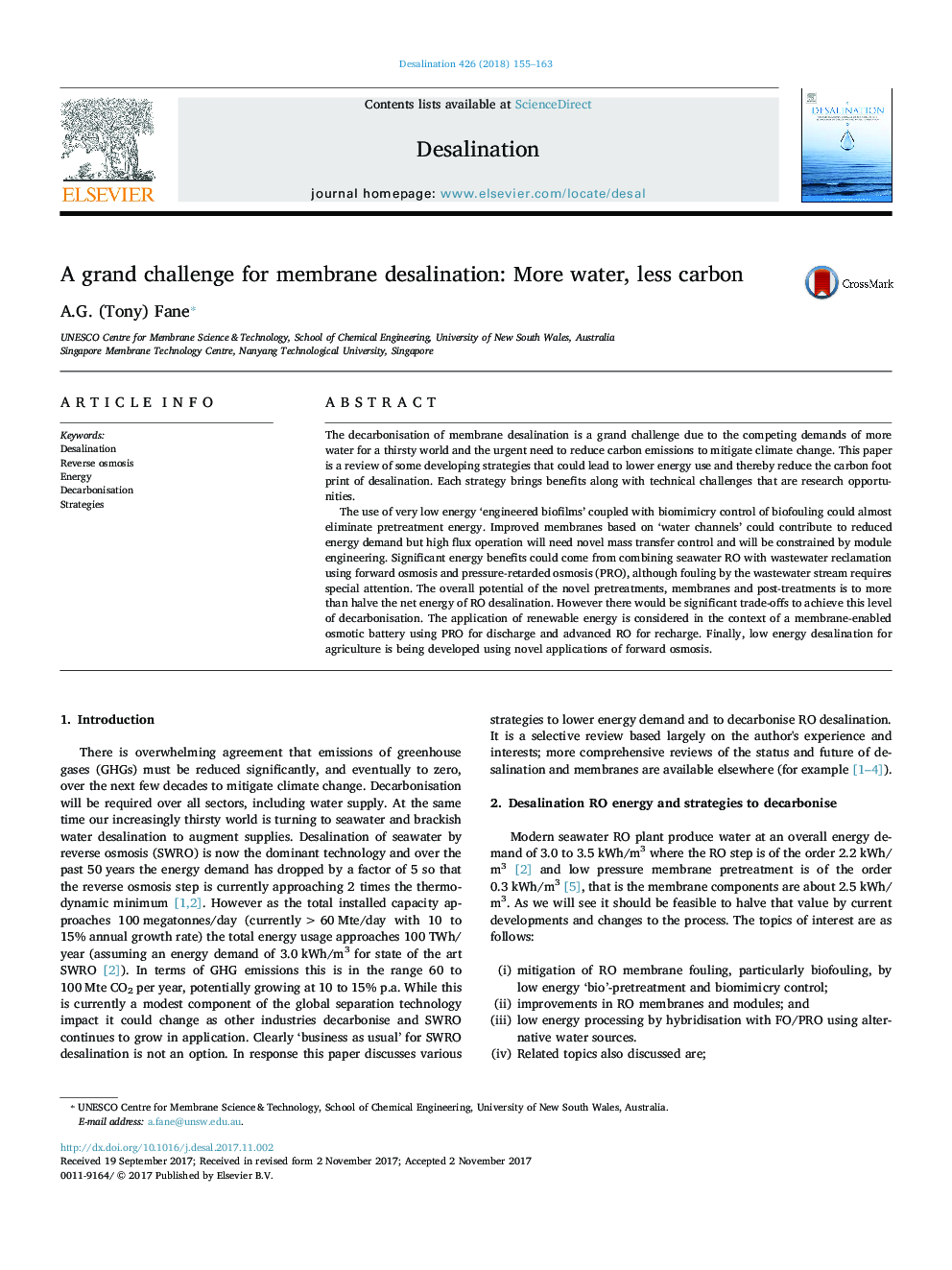| Article ID | Journal | Published Year | Pages | File Type |
|---|---|---|---|---|
| 7008122 | Desalination | 2018 | 9 Pages |
Abstract
The use of very low energy 'engineered biofilms' coupled with biomimicry control of biofouling could almost eliminate pretreatment energy. Improved membranes based on 'water channels' could contribute to reduced energy demand but high flux operation will need novel mass transfer control and will be constrained by module engineering. Significant energy benefits could come from combining seawater RO with wastewater reclamation using forward osmosis and pressure-retarded osmosis (PRO), although fouling by the wastewater stream requires special attention. The overall potential of the novel pretreatments, membranes and post-treatments is to more than halve the net energy of RO desalination. However there would be significant trade-offs to achieve this level of decarbonisation. The application of renewable energy is considered in the context of a membrane-enabled osmotic battery using PRO for discharge and advanced RO for recharge. Finally, low energy desalination for agriculture is being developed using novel applications of forward osmosis.
Related Topics
Physical Sciences and Engineering
Chemical Engineering
Filtration and Separation
Authors
A.G. (Tony) Fane,
